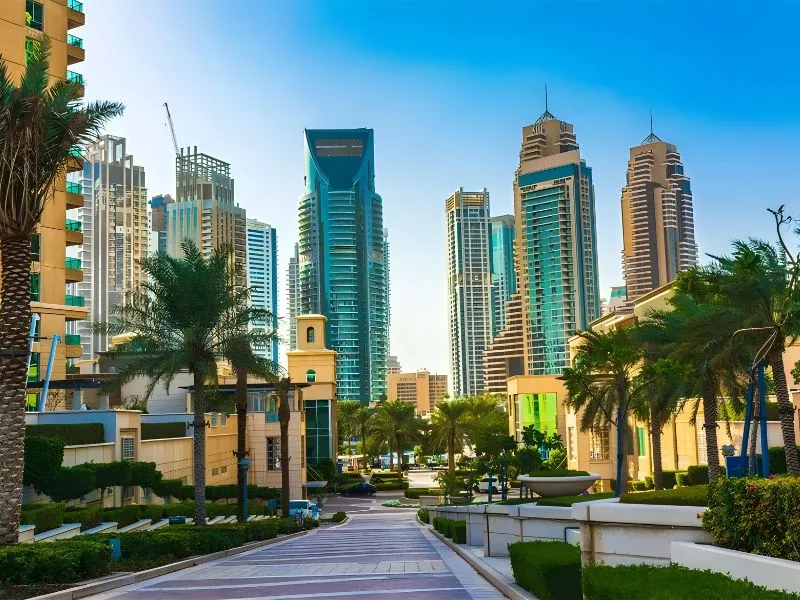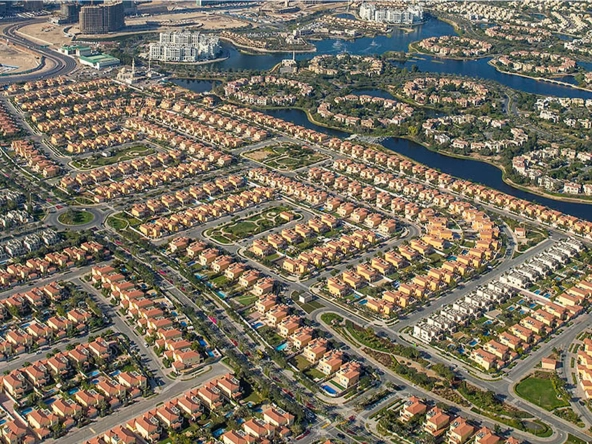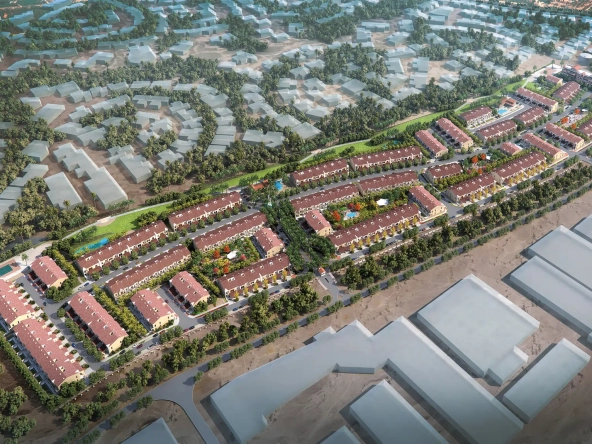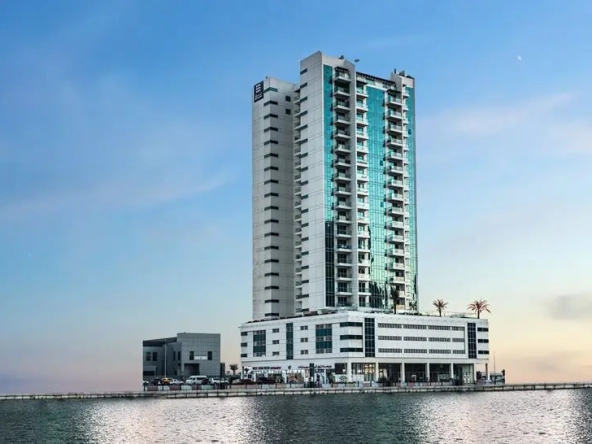The real estate market in Dubai is flourishing, drawing local and foreign investors keen to invest in property for promising returns.
Yet, as demand for Dubai property continues to soar, along with its prices – navigating Dubai’s dynamic real estate market is becoming far more challenging.
In February this year, apartment prices had already risen by 0.83% compared to January. According to the Property Monitor Dynamic Price Index, property prices were at an all-time high of US$352.31 per sq. ft, almost 5% higher than the city’s previous market peak in 2014. Following the 2014 peak, the property market saw a decline, but since 2020, prices have surged by 40 to 50%.
Despite surges, “waiting for lower prices carries a risk, as prices are poised to continue rising,” according to Gabriel Tamman, real estate expert at Tribeca Dubai.
“The Dubai landscape is very different today than in 2014. The city and country are attracting a much broader range of investors and residents than in pre-COVID years,” Tamman noted, and doesn’t see a compelling reason for prices to fall.
“Rental price growth has surpassed sale price growth in the last few years, and the sale price to income ratio is very healthy,” he added. Based on his industry understanding, Tamman anticipates prices to increase relatively this year, around 5 to 12%.
Bigger is better
According to Property Finder, the UAE’s most considerable real estate website, there has been a notable shift in need from traditional small-family apartments to the villa and townhouse sectors. Up to 40 percent of UAE home seekers are now setting their sights on villas, with an overwhelming 85 percent explicitly seeking three-bedroom and larger villas.
One of the enterprising forces behind the villa ownership wave is the inrush of younger buyers.
“We’ve seen a surge in interest from youth when it comes to villa ownership, with 39 percent of buyers under 40 years old in Q1 2024, a significant increase from 31 percent in Q1 2023,” said Mohamad Kaswani, VP of New Projects and MD of Mortgage Finder.
Influenced by the rising rental price trend, savvy millennials recognize the potential for long-term investments in expansive villa properties.
According to the online property platform Dubizzle’s Dubai Annual Property Market Report, Dubai rents increased by as much as 66 percent last year, with villa rentals seeing some of the most significant increases, with an average annual cost of $88,400.
Market conditions favor villa ownership.
The appeal of villa ownership is broader than the affluent segment. Thanks to flexible payment plans, buyers across various income brackets are seizing the opportunity to upgrade to larger living spaces.
Nearly 50 percent of buyers with a monthly income of less than $13,615 (50,000 AED) have invested in villas since the RERA calculator was recalibrated earlier this year. This is a considerable increase from the 37% recorded in Q1 2023.
Due to flexible payment plans combined with low interest rates, an increasing number of tenants are seizing the opportunity for a down payment on a property, as rental renewals offer less affordability. These conditions also make it favorable for homeowners to upgrade to larger living spaces.
Last year was highly profitable for villa owners in several areas of Dubai in terms of return-on-capital gains (ROCG).
Palm Jumeirah witnessed the highest ROCG increase, 41 percent. However, the overflow was not only to Palm Jumeirah, as Dubai Hills Estate registered a significant ROCG growth of 38% for 5-bedroom villas. Additionally, Arabian Ranches witnessed a rise in the average asking price of four-bedroom villas by 34 percent (ROCG) and five-bedroom villas by 29 percent.
While demand for villas has been widespread, recent data has shown that villa launch volumes have declined by 30 percent since the beginning of the year.
“Despite the sustained demand for villas, developers remain slower in responding to this surge, largely because of limited land acquisition opportunities,” said Prathyusha Gurrapu, Head of Research & Consulting at Cushman & Wakefield Core.
However, for home buyers seeking to invest in Dubai property in the near future, the overall supply of residential properties, including expected delivery figures, remains in line with forecasts, pointing to no significant oversupply headwinds, the company said.
Also Read: AMWAJ Development debuts in Dubai’s real estate market with Starlight Park
Areas in Dubai offering investment opportunities
Home seekers looking for profitable investment opportunities should consider areas beyond the famous and luxurious districts. Kaswani recommends home pleaders focus on areas with accessibility to hotspots, including metro connectivity and the comfort of transportation.
“With the blue line project being approved, we can expect more connected areas moving forward. Finding properties that offer these facilities and proximity to public transport can help generate better opportunities for growth and long-term returns on investment,” Kaswani stated.
A recent report by CBRE reveals that properties within a 15-minute walk of metro stations tend to have higher prices and rent increases than those in the broader market. The research of over 300 residential or mixed-use properties displayed an average growth in property prices of 43.8% and a 26.7% increase in rental prices near metro stations.
As a result, neighborhoods such as Jebel Ali, Dubai South, Dubai Investment Park, and the surrounding districts, bordered by the Blue Line, should see a wave in need for residential and commercial properties.
High-end residential developments inland, away from the coastal belt, also see pouring demand and promising opportunities.
These include Arabian Ranches, Dubai Hills, Tilal Al Ghaf, Al Barari, Emirates Hills, and Jumeirah Golf Estates. These projects prioritize sustainability, focusing on energy efficiency and green spaces, making them attractive to high net-worth individuals (HNWIs) worldwide.
Since the beginning of the year, 402 residential properties have been sold above AED 20 million in Dubai, displaying a 40 percent year-on-year increase. Most ultra-prime transactions are concentrated in these inland areas, Jumeirah Bay Island and Palm Jumeirah.
In addition to these areas, Tamman has also seen increased interest among the ultra-rich in properties in Business Bay.
“Business Bay has become incredibly attractive, thanks to new landmarks such as the Lana Dorchester Hotel and future developments such as Casa Canal designed by Killa and the Rings designed by Norman Foster,” Tamman concludes.
Affordability appeal attracts more foreign investors.
According to Kaswani, Dubai’s current housing market still offers affordable prices compared to other major global cities.
He pointed out, “When compared against other major cities like London, Paris, and New York, it is possible to find opportunities to get 3 to 3.5 times more for your money in Dubai than in other major cities.“
Despite some thoughts that other housing markets may be more resilient, Property Finder has seen favorable developments in Dubai that have made it a more secure investment than ever before. Kaswani added, “We are performing better than several key global economies, with growing foreign confidence and a larger share of property seekers looking to invest for the longer mile.“
For homeowners considering long-term investments, Property Finder has reported consistent returns on investments ranging between 7 and 9 percent year on year. This is not only higher than cities such as London and New York, which typically see yields between 4-6 percent, but it also signals a market that is maturing rather than experiencing massive fluctuations.




